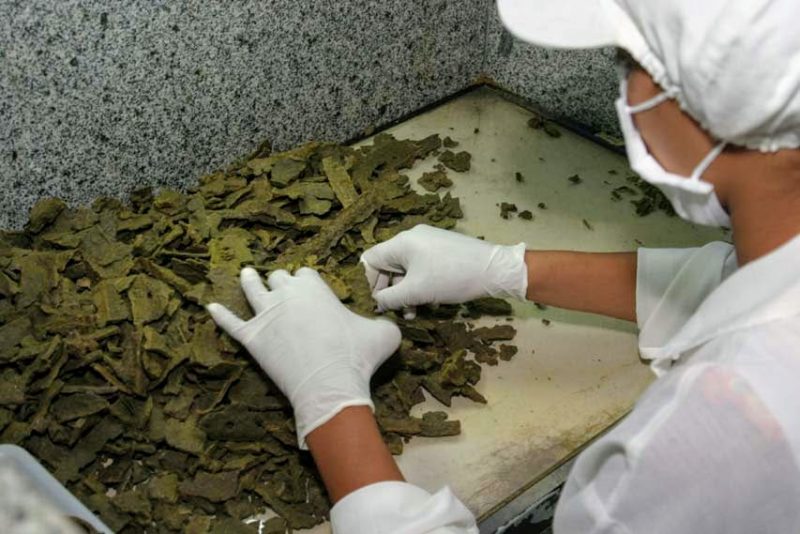GREEN PROPOLIS from Brazil
Its properties and applications in the pharmaceutical industry and in the production of dietary supplements
Green propolis from Brazil has quickly become very popular among pharmaceutical manufacturers and dietary supplement producers. This is not a temporary fad, but a trend with solid foundations, as this raw material owes its popularity to its proven laboratory-tested therapeutic properties.
What is green propolis and which of its properties make it such an attractive ingredient in the mentioned products?
What is green propolis?
Green propolis is a variety of propolis produced by bees using the resin of Baccharis dracunculifolia, a plant species growing in the tropical forests of Brazil. This resin gives the raw material its characteristic greenish color, a very intense distinct smell, and a sharp taste – which becomes burning after prolonged chewing. Moreover, it has numerous properties that we will analyze later in the article.
Let’s start with the definition of propolis itself. Propolis (bee glue) is a bee product, a rich mixture of resinous organic compounds collected by bees from the bark, shoots, and buds of certain plants, as well as wax, which is a product of the bee’s organism. It is a well-known ingredient in pharmaceuticals and dietary supplements, valued for its unique properties, including antibacterial, antioxidant, anticancer, and anti-inflammatory effects.
Propolis has a complex chemical composition, which can vary significantly depending on the factors that influenced the bees during the season. Among these factors, the most important is, of course, the species composition of the vegetation available to the bees in a given area.
Green propolis, due to its specific origin, is not only easily recognizable but also has a unique chemical composition, distinguished by, among other things, a high content of polyphenols.
Among the components typical for green propolis, it is worth mentioning: artepillin C, p-coumaric acid, caffeic acid, and kaempferol.
These components have made green propolis an extremely valuable and sought-after medicinal raw material on the market.
Brazilian propolis is also known for its chemical purity. It does not contain pesticide contamination or residues of veterinary drugs. This is because a different variety of bees is raised in Brazil compared to Europe, the so-called Africanised bees, which are much more resistant to diseases and therefore do not require pharmacological treatment.

Baccharis dracunculifolia
What are the properties of green propolis?
Scientific research, the amount of which on propolis in general – and especially on green propolis – has significantly increased in recent years, confirms the following effects:
- Antibacterial and antimicrobial – among others against such bacterial species as Staphylococcus aureus, Streptococcus mutans, and Kocuria rhizophila, as well as Candida fungi;
- Prevents oral diseases – green propolis can prevent dental caries related to the presence of Streptococcus mutans bacteria in the oral cavity, which is one of the factors contributing to tooth decay;
- Exhibits anti-inflammatory and immunomodulatory effects;
- Accelerates the healing of wounds and ulcers;
- Used as an ingredient in medicines reducing swelling and congestion of the mucous membrane – syrups and effervescent tablets for colds, coughs, or flu, in which honey is often also included;
- Supports brain activity – flavonoids present in green propolis protect against oxidative damage by scavenging free radicals and show neuroprotective abilities against ischemic neuronal damage and cell death;
- Studies – both in vitro and in vivo – confirm the benefits of its use in preventing retinal damage. This is related to the neuroprotective action of Brazilian propolis, which can inhibit oxidative stress processes;
- Proven to protect nerve cells from damage, providing effective, complementary anticancer therapy and chemopreventive action;
- Anticancer – counteracts, among others, laryngeal and prostate cancer;
- Finds application in drugs used for diabetic complications;
- The use of green propolis brings benefits in the treatment of circulatory disorders and heart diseases.

Green Propolis in Cancer Treatment
The components of propolis that contribute to the inhibition of oncogenesis initiation and progression are primarily: caffeic acid phenethyl ester (CAPE), artepillin C, chrysin, galangin, and cardanol, whose molecular action is largely based on the induction of programmed cell death (apoptosis) in cancer cells.
Propolis acts on two main signaling pathways responsible for apoptosis. In the extrinsic pathway, TNF family proteins, such as TRAIL, activate corresponding receptors on the cell surface, leading to the initiation of apoptosis. In the mitochondrial pathway, various pro- and anti-apoptotic proteins control the permeability of the mitochondrial membrane, which decides the release of cytochrome c and the formation of the apoptosome. These two pathways converge in the activation of caspases, enzymes that catalyze the degradation of key cell proteins.
Propolis shows the ability to activate both these pathways through various mechanisms, such as modulation of protein and enzyme expression. Ultimately, this leads to an increase in caspase 3 activity, one of the main executive caspases. Moreover, propolis inhibits angiogenesis and the expression of certain metalloproteinases, which in turn affects the expansion and migration of cancer cells.
Bladder Cancer
Propolis acts on apoptosis mechanisms and additionally lowers the migratory abilities of cancer cells, which constitutes an additional anti-cancer mechanism.
Prostate Cancer
Propolis, especially artepillin C present in green propolis, acts synergistically with chemotherapy and radiotherapy, paving the way for adjuvant therapies, especially for patients with cancer forms resistant to standard therapies.
Kidney Cancer
Limited studies using artepillin C indicate that propolis exhibits anti-cancer effects on renal cancer cells, representing a promising direction for further research.
Green Propolis: Significance for the Pharmaceutical Industry
With its long history in traditional medicine, propolis, and particularly green propolis, has been included in numerous pharmaceuticals and dietary supplements for decades.
Green propolis also responds to the preferences and needs of consumers who currently place a great emphasis on health and well-being, seeking natural remedies and preparations to boost immunity.
Market research available to the public indicates that:
from 2016 to 2021, Europe saw the introduction of 271 products containing green propolis, aimed at all age groups;
a rapid increase in the number of such products on the market is observed: while 29 were introduced in 2018, the number rose to 41 by 2020.
The growth of the vitamin and dietary supplement market is unquestionable. To create more innovative products that align with current consumer expectations, the sector has recently paid particular attention to propolis, including green propolis.
Sources:
Kazuo Shimizu, Hitoshi Ashida, Yukinaga Matsuura i Kazuki Kanazawa Antioxidative bioavailability of artepillin C in Brazilian propolis, Archives of Biochemistry and Biophysics, 2004
Cheung KW, Sze DM, Chan WK, Deng RX, Tu W, Chan GC. Brazilian green propolis and its constituent, Artepillin C inhibits allogeneic activated human CD4 T cells expansion and activation. J Ethnopharmacol. 2011
Szliszka E, Zydowicz G, Janoszka B, Dobosz C, Kowalczyk-Ziomek G, Krol W. Ethanolic extract of Brazilian green propolis sensitizes prostate cancer cells to TRAIL-induced apoptosis. Int J Oncol. 2011
Afsharpour F, Javadi M, Hashemipour S, Koushan Y, Haghighian HK. Propolis supplementation improves glycemic and antioxidant status in patients with type 2 diabetes: A randomized, double-blind, placebo-controlled study. Complement Ther Med. 2019
Inokuchi Y, Shimazawa M, Nakajima Y, Suemori S, Mishima S, Hara H. Brazilian green propolis protects against retinal damage in vitro and in vivo. Evid Based Complement Alternat Med. 2006
Chiu HF, Han YC, Shen YC, Golovinskaia O, Venkatakrishnan K, Wang CK. Chemopreventive and Chemotherapeutic Effect of Propolis and Its Constituents: A Mini-review. J Cancer Prev. 2020
Yuan W, Chang H, Liu X, Wang S, Liu H, Xuan H. Brazilian Green Propolis Inhibits Ox-LDL-Stimulated Oxidative Stress in Human Umbilical Vein Endothelial Cells Partly through PI3K/Akt/mTOR-Mediated Nrf2/HO-1 Pathway. Evid Based Complement Alternat Med. 2019